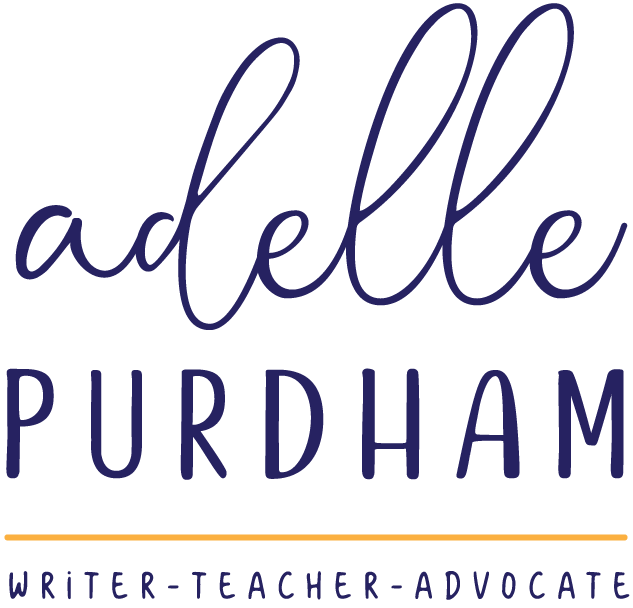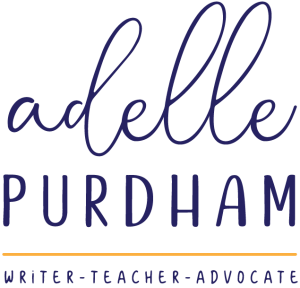
Tips for parents looking to advocate on behalf of their child with different abilities at school.
“Write like a Motherfucker” is a Cheryl Strayed reference, the author of Wild and Tiny Beautiful Things. You can read the story of write like a motherfucker that inspired my title here, but for the time being, let’s focus on advocating.
First of all, do you see what I did up there? I didn’t write out the word “motherfucker” in the title of my blog, because I’m just not comfortable doing that. That is my first piece of advice: don’t plan on doing something you aren’t comfortable with, such as planning a talk around the details of your child’s genetic condition, unless you are clear and comfortable on those details and the telling serves a purpose. E.g. When I talk about Down syndrome, I don’t go further into the chromosome discussion than that they’re made up DNA, which contains our genes (which make you who you are). I don’t talk about how genes code for proteins, and how proteins perform key functions in our bodies because really, where am I going to take it from there?
The flip side to presenting the uncomfortable then is to stick with what you know. And what you know best, what everyone knows best, is their own story. Tell the story of how your child came to be; how you felt and dealt with those feelings, what you learned, and how you feel now. Maybe that’s too personal. Maybe you’d rather stick with the facts.
Another idea: stick with the facts. If you want to say what Down syndrome is, for example, go for it! Three copies of the twenty-first chromosome. A natural chromosomal arrangement. John Langdon Down was the physician who first grouped and identified the traits commonly identified in people with Down syndrome. One in 800 babies in Canada is born with Down syndrome. This is all interesting information and you should definitely tell it. What makes it even MORE interesting is if you can add in a personal story that’s relate-able and age-appropriate. For example, in speaking to elementary students, I talk about the time in grade 4 when I won two running races in a row, and then guzzled down a random water bottle that my friends handed to me that actually belonged to a little boy with Down syndrome. When my friends (who thought they were being hilarious) told me who the water bottle belonged to, I threw it to the ground and wiped my lips in disgust. I ask the students questions about why they think I did this (is Down syndrome contagious – no!) and what they think I could have done differently? This story segue ways into talking about choosing kind. I also share a book that represents a beautiful friendship between a little boy and a little girl named Isabelle who like to play together, because kids with Down syndrome like to play the same games any kid does.
Which brings me to my next idea. If you’re lacking stories of your own, or just don’t feel comfortable sharing your personal recollections, why not share someone else’s story? My friend Isabelle, by Eliza Woloson, is the book I was referring to, and a quick google search will reveal several others. Books are great starting points for initiating key discussions with students. With older students, a meaningful quotation is a nice touch. I used this one from Wonder, by R.J Palacio, “Greatness lies not in being strong, but in the right using of that strength. He is the greatest whose strength carries up the most hearts by the attraction of his own.” This quotation fit in well with my story, maybe there’s one that fits in well with yours or touches on an idea you want to explore? Also, scour professional websites. Lick them clean for good ideas. The Canadian Down Syndrome Society’s website is full of brochures and helpful information about Down syndrome. That was the first place I went to as a new parent and the best source to gather concrete facts for my presentations to adults and children alike.
If you’re talking with students, come prepared with questions of your own. Kids love to get involved in what you are presenting and to share what they already know.
Create a PowerPoint that includes beautiful images of your child. Eighty percent of us are visual learners – capitalize on that. Then, whatever it is you decide to say that accompanies those images, it may be best to write it down. My husband, who presents content for a living, is comfortable speaking off the cuff. He uses point form notes when presenting to an audience and elaborates from there. I, on the other hand, prefer to have a detailed script in case I need it (because I will). I might not, but it gives me comfort that if I blank in front of an audience I have something to fall back on.
The very first time I spoke to anyone about our story, period, I read the newspaper article I had written. That was it. The subject of my child with Down syndrome was still too fresh and emotionally charged for me to trust myself with anything other than words I had written down. Keep it simple, and small gentle steps as needed. Whatever it is you choose to share, you will make an impact. When we open ourselves up, making ourselves vulnerable to others, in this way they come to trust us and what we have to say. I always get the most attentive, still audience, when I’m sharing a personal story, but that may also be because I love me a good personal story. What do you love, and how can that translate into advocacy?
Maybe you aren’t comfortable with speaking to your child’s class at all, and I should point out that is TOTALLY OKAY. There are many other ways to advocate, and get your child’s class the information they need. Invite a self-advocate, such as a person with Down syndrome that you know has a reputation as a speaker, to come and talk about their life. Share books, videos and other resources with the classroom teacher, such as the teacher guide put out by the Canadian Down Syndrome Society. Inform the school/teacher about any important events related to your child’s diagnosis, i.e. community fundraising walks to raise awareness (Go21 in the Ds community), or a special day or month, such as World Down Syndrome Day (March 21) or International day of persons with disabilities (December 3). Encourage your school to participate in the WDSD school contest, if you live in Halton, or equivalent in your area (and if there isn’t a contest, maybe your association could start one and you could be involved in that!) Write a letter to your child’s class that includes helpful information, or a note to the parents.
Remember that advocacy isn’t about one special day, but something every parent does for their child on an ongoing basis. I have found positive, regular communication and exchanges with my daughter’s school to be one of the most effective forms of advocacy. When others see that you care, they’re more likely to care too.
Happy advocating, and remember, be true to you. Don’t advocate like a motherfucker unless you really want to.
*A huge thank you to a fellow parent and friend who sent me this question of how best to advocate, which in turn prompted this post.





4 Comments
Love this!!! So happy to have you advocating in our little community!!! You rock!
Thanks Kari! Right back at you. xo
Great advice!! Reading this after a full day of advocacy and validating to hear I’m on the right track! Lots of great points to consider for next year.
Thanks Sarah! Happy World Down Syndrome Day!